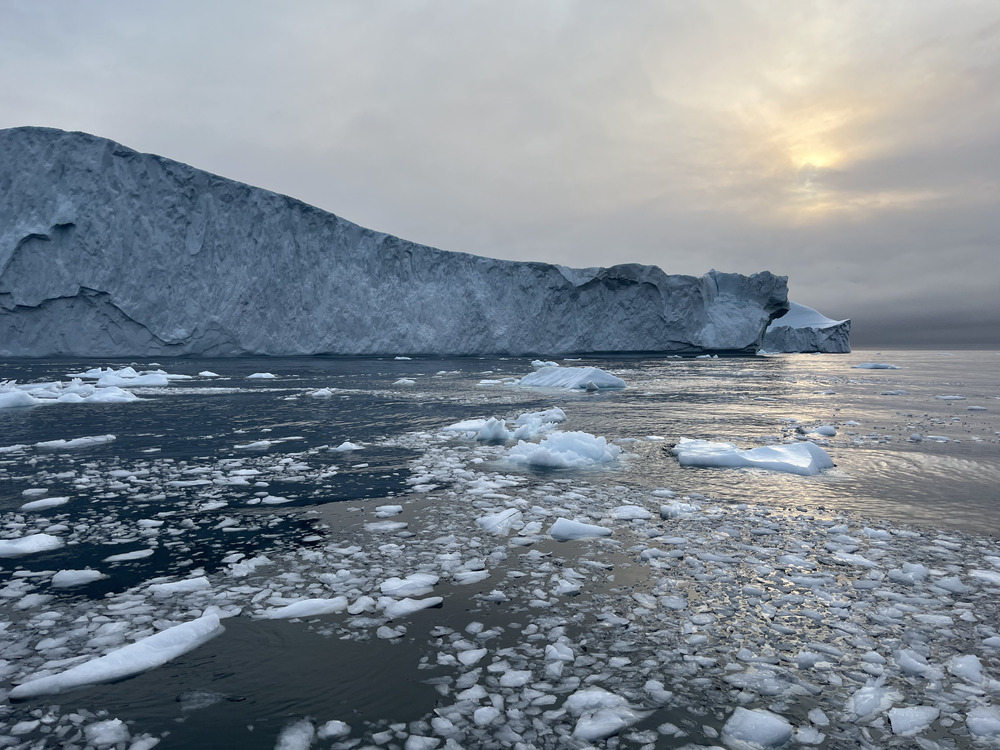
This past summer in the Arctic was the warmest since 1900, contributing to disasters across the wider region, including flooding in Juneau, Alaska and a record wildfire season in Canada.
Those are some key takeaways from the National Oceanic and Atmospheric Administration's annual Arctic Report Card, released today. The Arctic is warming nearly four times faster than the global average as a result of human-caused climate change, driven primarily by burning fossil fuels.
Researchers say changes in the Arctic are an early indicator of what the rest of the globe can expect as the planet warms.
"The Arctic is now more relevant to us than it has ever been before," said NOAA administrator Rick Spinrad. "In many cases, what we're seeing is — by a few years — the kinds of impacts that we're going to see elsewhere in the country."
"What happens in the Arctic does not stay in the Arctic"
Climate change in the Arctic doesn't just offer a view of the future. It also directly influences worldwide changes across ecosystems, from sea-level rise, to new weather patterns, to altered wildlife migrations.
As Spinrad put it, "what happens in the Arctic does not stay in the Arctic."

One example is the Greenland ice sheet. The melting of the ice sheet is the second-largest contributor to global sea-level rise. (The largest contributor is water expanding as it warms.) Greenland lost a huge amount of ice last year – more than 150 billion tons. On the upside, that was less than the recent average, thanks to above-average snowfall.
"The loss was not as large as many recent years, not because it wasn't warm. In fact, it was very warm," said Rick Thoman, an arctic climate specialist at the University of Alaska, Fairbanks, and lead editor of this year's Arctic Report Card.
But this year's heavy snowfall "saved Greenland's proverbial bacon," Thoman said.
Unexpected impacts on a key species
Another surprise in this year's report card: salmon. Salmon are key to many of the region's ecosystems, economies, and cultures, and several salmon species have faced long term declines linked to climate change. In western Alaska, chinook and chum salmon hit record low levels this year, but sockeye salmon in Bristol Bay hit record highs. The abundance of sockeye had an unexpected downside for commercial fishermen, however: a price crash.
"There's so many salmon, they can barely make a profit," Thoman said. "It's really a significant economic impact for all three of the species."
It's unclear exactly why the salmon species are responding differently to climate change, but researchers say it's likely linked to changing conditions in both the ocean and freshwater ecosystems central to the salmon life-cycle.
Incorporating Indigenous knowledge

Monitoring these ecological changes across the Arctic, and the response of wildlife, is an ongoing effort. This year's report also highlights a program aiming to draw upon the expertise of the region's Indigenous residents: the Alaska Arctic Observatory and Knowledge Hub (AAOKH). The group works with a network of coastal Indigenous observers to document long-term environmental change and impacts in northern Alaska.
"We're strong people with strong knowledge systems, and a strong desire to share our knowledge," said Roberta Tuurraq Glenn-Borade, the community liaison for AAOKH.

Glenn-Borade said Indigenous observers often provide context beyond simple data collection. For instance, Iñupiat observer Billy Adams recorded marine mammal sightings in Utqiaġvik last year, with critical details linking large-scale climate changes to community-level impacts.
The observations informed scientists' understanding of the environmental factors driving animal behavior – like how shifting winds and sea-ice drew a surprising number of ringed seals and polar bears to Utqiaġvik in January.
"We are really getting the perspective and the context of what environmental changes are happening, what they mean in terms of local scale impacts to the community and to cultural infrastructure," said Donna Hauser, research professor at the University of Alaska Fairbanks and the principal investigator of the Alaska Arctic Observatory and Knowledge Hub.
Hauser and Glenn-Borade expressed optimism that university researchers and Indigenous knowledge holders can help inform each others' understanding of the changing Arctic, ultimately helping communities adapt to the altered environment.







